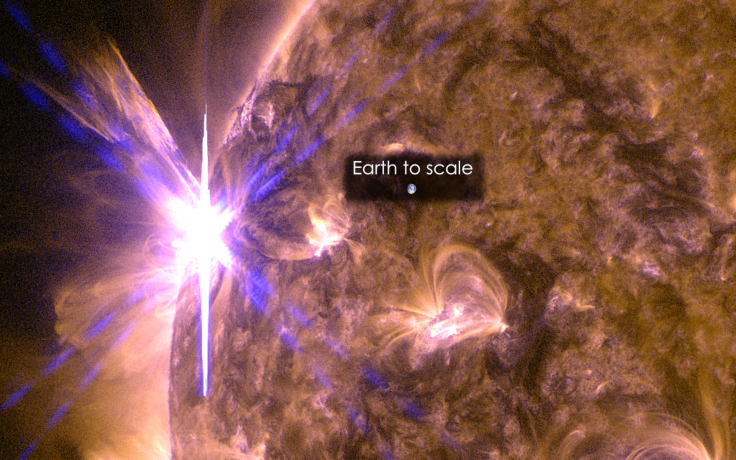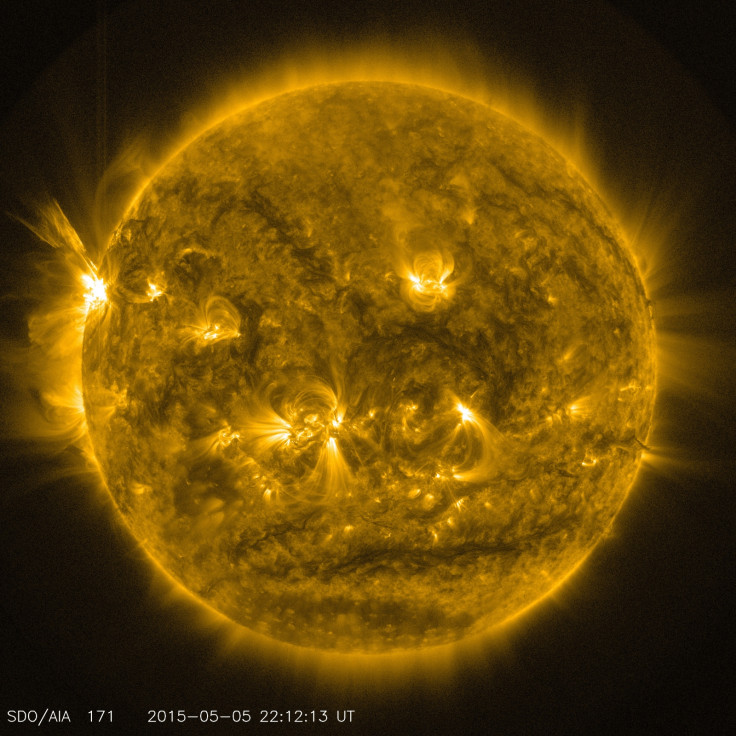Sun emits massive X-class 'Cinco de Mayo' solar flare causing strong radio blackout [Photos and video]
The most powerful solar storm of the year has erupted from a "wildly active sun", producing an X2.7-class solar flare.
The massive solar flare burst from the sun on 5 May - Cinco de Mayo - and has caused a strong radio blackout, Nasa said.
Solar flares are powerful bursts of radiation. While this radiation cannot pass through Earth's atmosphere, when they are intense enough they can disturb the layer in the atmosphere where GPS and communication signals travel.
X-class solar flares are the most intense, with the following number denoting the level further – an X2 is twice as strong as an X1, for example.
An impulsive R3-Strong radio blackout was observed shortly after 2200 UTC (1800 EDT) today (05 May 2015)," Nasa said. "Given the impulsive nature of this event, as well as the source location on the eastern limb of the sun, we are not expecting a radiation storm at Earth.

"We will be on the lookout for new imagery from the NASA SOHO mission to determine if there was an associated coronal mass ejection (CME) with this event. Given the same logic above however, we do not expect there to be one that would impact Earth.
Footage of the solar flare was released by Nasa, while the event was also broadcast live from the Slooh telescope. The eruption peaked at 6.11 EDT and the film shows a bright flash coming from the sun's surface.

A statement from Slooh astronomers said: "This sudden increase in solar violence, which includes the new X-class storm, the most powerful category, will produce effects ranging from stunning auroras to radio blackouts. A radio blackout already occurred yesterday evening at 1800 EDT."
Astronomer Bob Berman added: "Just when we thought that the maximum peak of solar cycle number 24 was behind us, the Sun is coming up with violent surprises. It will be fun to watch, and share with Slooh's members and the public, using special narrow band pass filters."
© Copyright IBTimes 2025. All rights reserved.






















